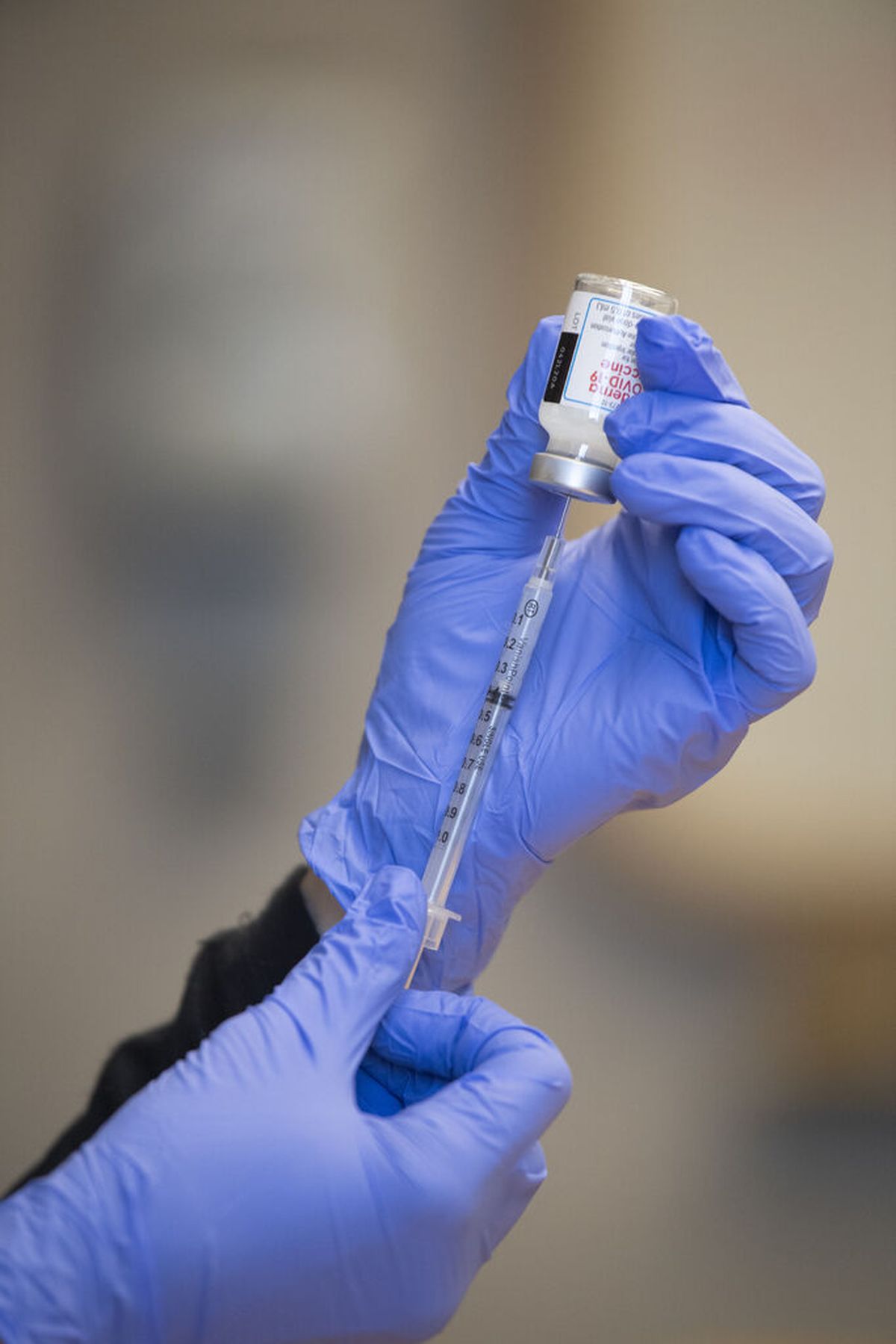Report shows equity gaps in access to COVID-19 vaccine so far in Washington

Public health officials are working to inoculate more Hispanics and other racial minorities after reports show vaccination rates are lagging.
While Hispanic residents in Washington make up 13.2% of the state’s population, only 4.7% of residents who have received at least one dose of a COVID-19 vaccine are Hispanic.
There are also concerns regarding vaccination disparities between the state’s multiracial and Black populations.
Last week, the state released an initial report showing the age and ethnicity of Washington residents who have been vaccinated as of Feb. 6. Initial data shows distribution is not equitable for certain communities.
At first, the vaccine was only available to frontline health care and emergency response workers or anyone in health care, which is why more than 370,000 Washington residents younger than 65 received shots.
A few weeks ago, residents 65 and older, and people 50 and older living in multigenerational households – such as grandparents living with their grandchildren – became eligible for the vaccine.
Researchers have noted that inequities in life span are likely affecting the lagging vaccination rates among minorities, especially in regions prioritizing residents over the age of 75 such as Washington.
“Setting the initial threshold at 75, however, ignores the fact that a smaller share of Black people reach that age than white people,” a report from ProPublica and MLK50 found.
Washington state health officials have acknowledged the complex and historical factors that are contributing to disparities.
“There are a lot of factors contributing to inequities we’re seeing in our data; in addition to the inequities baked into the system like racism, we’re also looking at things like low supply and hesitancy,” said Paj Nandi, director of community relations and equity at the Department of Health. “BIPOC communities and historically marginalized groups have hesitancy and distrust for very valid reasons, but we also know we have solutions by working with communities.”
The Department of Health will release a plan to address equity concerns soon, and Secretary of Health Dr. Umair Shah said the department is committed to taking immediate action to address the disparities.
“The data show us we need an even more pro-intentional equity approach,” Shah told reporters last week.
The vaccine distribution data seem to mirror COVID-19 case, hospitalization and death data in Washington as well. Nonwhite communities in the state have been hit disproportionately hard by the virus.
Native Hawaiian, Pacific Islander and Hispanic populations have the highest age-adjusted COVID-19 case rates in the state, about four times higher than white and Asian populations in the state, which have the lowest proportional case rates.
Black people living in Washington state have COVID-19 case rates twice as high as white and Asian residents.
The report also shows that American Indian and Alaska Native communities have been accessing the vaccine at very high rates, particularly those over the age of 65.
The report highlights ethnicity data of the 741,399 Washington state residents vaccinated at the time of its publication, but even since then thousands more vaccines have been administered.
Locally, the Spokane Regional Health District and federally qualified health centers are working alongside community groups and organizations to get vaccine doses to people that have been hit hard by the virus. And while the district does not have access to county-level ethnicity or age vaccination data, the work with community organizations has been ongoing.
Heleen Dewey, health equity specialist at the district, said they created a COVID equity taskforce that has met regularly throughout the pandemic. The partnership was much-needed in Spokane, where Pacific Islanders, specifically in the Marshallese community, were testing positive at high rates in early summer. Native Hawaiians and Pacific Islanders make up 2% of the county’s total cases, despite making up 0.6% of the population.
One of the first community vaccine clinics, hosted by the Pacific Islander Community Association, SRHD and CHAS, was targeted to elders in Pacific Islander communities, who qualify for the vaccine under current state guidance. Dewey said she expects many more community-based or mobile clinics in the future to help get vaccine out to several communities in the county.
Additionally, addressing barriers to accessing other vaccine sites, like the mass vaccination sites, will be important going forward, she said.
“One of the key things is also recognizing that we need to lead these conversations with cultural humility and that means understanding that there is a historical distrust and trauma as a result of medical inequities and harm to many communities that have been disproportionately impacted by the pandemic,” Dewey said.
The Department of Health has contracted with 41 community-based organizations to help with vaccine distribution, Dewey said.
Letting community organizations and trusted leaders in those communities lead in vaccine distribution, and compensating them to do so, is important, Dewey said.
“The messenger is really going to be community members that they trust,” she added.